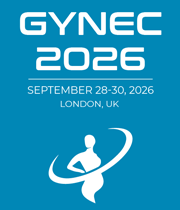Urogynecologists
Urogynecologists specialize in female pelvic medicine and reconstructive surgery, addressing conditions like urinary incontinence, pelvic organ prolapse, and pelvic floor dysfunction. Their work combines gynecologic and urologic knowledge to restore function and quality of life for women affected by these often-underreported issues. Urogynecologists utilize diagnostic tools such as urodynamics, pelvic ultrasound, and cystoscopy to identify the root cause of symptoms and determine appropriate interventions. Treatments range from behavioral therapies and pelvic floor rehabilitation to surgical repairs, including minimally invasive and robotic-assisted procedures. Urogynecologists play a pivotal role in addressing the anatomical and functional consequences of childbirth, aging, and prior pelvic surgeries. They also focus on preventive strategies and patient education to reduce recurrence and improve long-term outcomes. With growing awareness of pelvic health, urogynecologists are increasingly involved in multidisciplinary collaborations with physical therapists, colorectal surgeons, and primary care providers. Their patient-centered approach enhances recovery and supports holistic wellbeing across all stages of a woman’s life.

Neda Zarrin-Khameh
Baylor College of Medicine, United States
Marlen Sulamanidze
Total Charm Clinic, Georgia
Mohamed M Hosni
London North West University Healthcare NHS Trust, United Kingdom
Neda Zarrin-Khameh
Baylor College of Medicine, United States
Marlen Sulamanidze
Total Charm Clinic, Georgia
Mohamed M Hosni
London North West University Healthcare NHS Trust, United Kingdom




Title : Evaluate the changes in SP-D levels in plasma during different phases of the menstrual cycle recruited from the Well- Adult Surfactant Protein Study (WASP)
Natnicha Kitti udom, University College London, Thailand
Title : Synergistic antifibrotic potential of protocatechuic acid and D-Carvone in liver protection
Ling Yin, Hefei Comprehensive National Science Center, China
Title : Pathologic findings in women with atypical glandular cells on Pap test
Neda Zarrin-Khameh, Baylor College of Medicine, United States
Title : Non-ablative radiofrequency for pelvic floor dysfunction and female intimate anti-aging: a 6-month prospective multi-centre cohort objectiv
Shaadaiti Wufuer, First Affiliated Hospital of Xinjiang Medical University, China
Title : Benign gynecological conditions and lifetime contraceptive patterns: a population-based analysis of the 2022–2023 national survey of family growth
Mayi Gnofam, Stony Brook University, United States
Title : Hysteroscopic endometrial resection with resectoscope versus Novasure ablation: A look at patient satisfaction with treatment of abnormal uterine bleeding and rates of progression to hysterectomy
Genevieve Kan, West Gippsland Healthcare Group, Australia